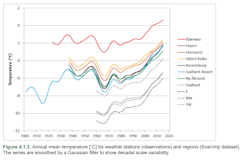Spitsbergen, the ground zero of climate change
Energy Observer is becoming the first vessel in the world to join the Arctic Circle, only powered by renewable energy and hydrogen. 2,400 miles to sail from St Petersburg to Spitsbergen, an iconic destination for many reasons.
This island in the Norwegian archipelago of Svalbard is deeply impacted by the climate change more than anywhere else on the planet. A phenomena that Energy Observer will report on during its Odyssey.
Spitsbergen – meaning “the pointed mountain” – is an island in the Arctic Ocean. One of the islands of the Norwegian Svalbard Archipelago among the northernmost inhabited lands in the world. Here, at 79° north latitude, nature has long dictated its law. Then a coal mine was opened on the island. People have made themselves comfortable there, tourism is developing. Yet even today, bears still rule Spitsbergen. They would outnumber the island’s inhabitants. But for how long? Because the region is hard hit by climate change, more than anywhere else on earth. The ice is melting at an alarming rate.

Svalbard's Coast
Always rising temperatures
In Ny-Alesund, in the northernmost international scientific base on the planet, researchers are studying this fragile ecosystem. In Spitsbergen, since pre-industrial times, temperatures have risen twice as fast as the global average. This is because of a phenomenon that experts call polar amplification.

Svalbard has experienced warming of 4°C the last 50 years
In principle, the reflectivity of Arctic ice should reflect 80% of the heat from the Sun back into space. However, in a warming world, there is a surplus of heat from tropical areas at the poles, making the ice melting. The surface darkens and absorbs more solar radiation, creating a loop which amplifies more and more the warming. Other factors can worsen the situation, such as methane release – a powerful greenhouse gas – from the soil. All this makes the region particularly sensitive to climate change.
It was an analysis of glacier systems that made it possible, as early as the 1970s, to detect the warning signs of the climate crisis we are experiencing today. A particular position that is worth in Spitsbergen the nickname of ground zero of climate change.
Our Spitsbergen series
[Spitsbergen Objective] What are the consequences of melting ice?
More information
Climate in Svalbard 2100 – a knowledge base for climate adaptation (Norwegian Centre for Climate Services – NCCS)
What’s happening in the arctic and why it matters to you (Elizabeth Arnold – TEDxSeattle)
Spitzberg, les vigies du climat (Les dessous de la mondialisation – Public Sénat)
The Northernmost Town on Earth (Svalbard in 4K) – Veritasium